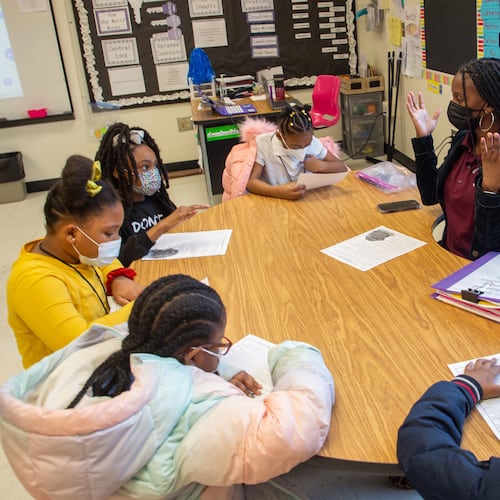Georgia ranks below the rest of the country in the well-being of its children in areas such as education and health, according to research released Monday by the Annie E. Casey Foundation.
The foundation’s 36th report on child well-being explored areas such as how well students are doing in reading and math, the percentage of families without health insurance, those living in extreme poverty and children experiencing mental health issues like anxiety or depression. Georgia ranked 39th overall. The Peach State had its highest ranking, 32nd overall in education, and its lowest ranking, 42nd, in family and community, which included children living in high-poverty areas. New Hampshire ranked first overall while New Mexico ranked last.
The report found steady progress nationally in high school graduation rates and a decline in teen births. There were challenges in other areas; academic outcomes are still worse than before the COVID-19 pandemic.
Here are five key findings about how Georgia stacks up to the rest of the nation in education:
- The percentage of eighth graders who were not proficient in math in Georgia last year was at 76%, 3 percentage points higher than the national average. The math achievement levels were measured and defined by their performance on the National Assessment of Educational Progress, also known as the nation’s report card.
- The percentage of fourth graders who were not proficient in reading in the Peach State last year was at 70%, the same as the U.S. average. The finding was also based on NAEP performance.
- Per pupil spending has increased in recent years in Georgia, to $12,108 during the 2020-21 school year. But it was still about $2,000 less than the rest of the country.
- Chronic absenteeism among fourth graders in Georgia last year was at 32%, 1 percentage point higher than the national average. The foundation defined chronic absenteeism as students who said they were not in school three or more times in the last month.
- Fifty-two percent of Georgia children were not attending preschool between 2019 to 2023. That’s slightly better than the national average of 54%.
State education officials have previously noted the proficiency percentages on several grade levels in Georgia in reading and math are statistically lower than just a handful of states.
The foundation encouraged policymakers and elected officials to find what’s working in some states and apply them to improve the lives of children.
About the Author
Keep Reading
The Latest
Featured


